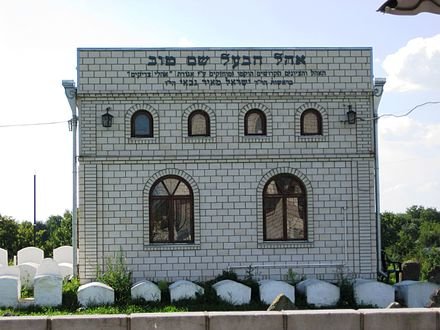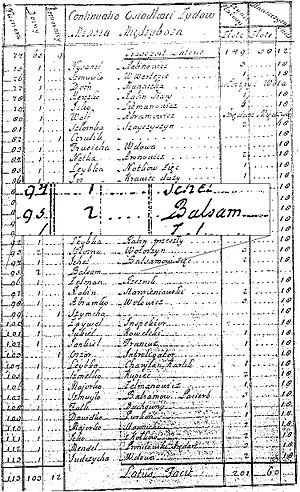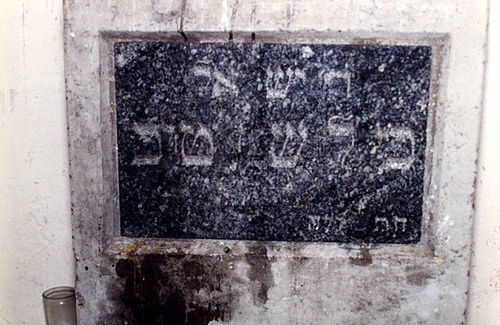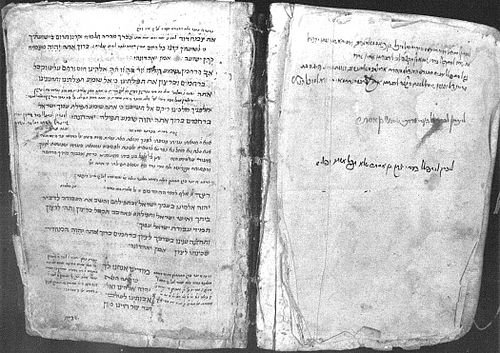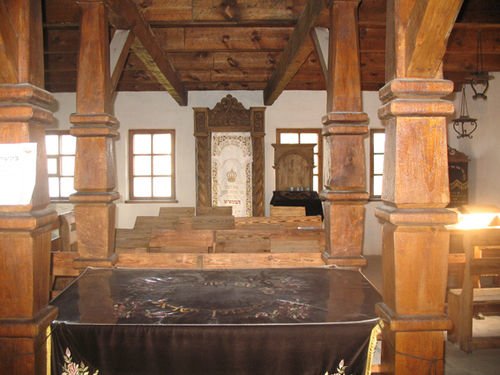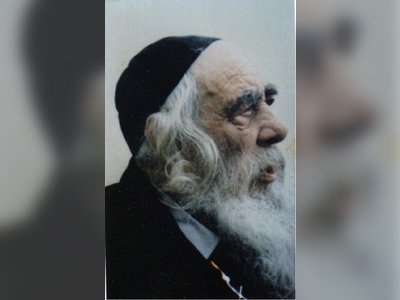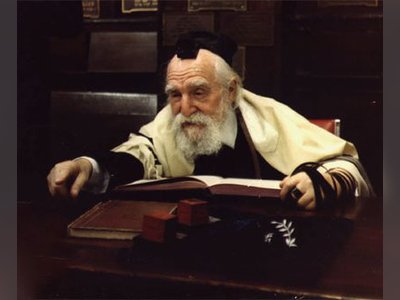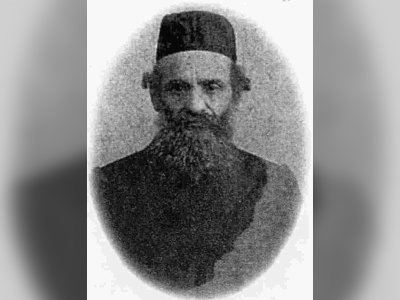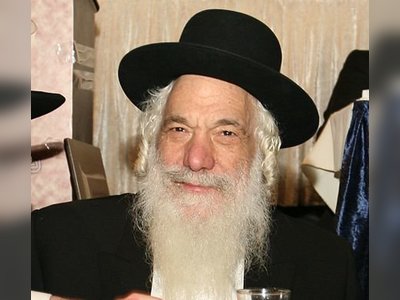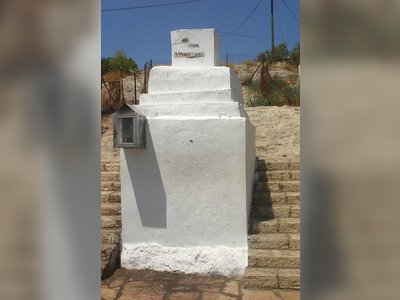The Baal Shem Tov: The Father of Hasidism
The Baal Shem Tov, Rabbi Israel ben Eliezer, was a mystic and spiritual leader who founded the Hasidic movement in the 18th century. Born in the late 17th century in Eastern Europe, he lived a relatively humble life until he revealed himself as a Baal Shem, a healer and spiritual guide who used Kabbalistic practices to help others. He settled in Medzhybizh, Ukraine, where he attracted disciples and laid the groundwork for Hasidism, emphasizing the importance of joy, devotion, and the connection between ordinary people and the divine.
His legacy continues to influence Jewish thought and practice to this day, with Hasidic communities and rebbes (spiritual leaders) carrying on his teachings and traditions.
His life and teachings are celebrated and remembered by Jews around the world, and his tomb in Medzhybizh remains a place of pilgrimage for those seeking spiritual inspiration.
Rabbi Israel ben Eliezer, known as the Baal Shem Tov (acronym: Besht), was born on the 18th of Elul, 5458 in 1698, and passed away on the 6th of Sivan during the holiday of Shavuot in 5520, which corresponds to May 21, 1760. He was a renowned kabbalist and a spiritual leader of Eastern European Jewry, regarded as the father of the Hasidic movement.
The Baal Shem Tov worked as a folk healer through incantations and amulets (known as a Baal Shem) and settled in the town of Medzhybizh, in Podolia, in the 1740s. There, he attracted a following of disciples who were drawn to his profound understanding of hidden spiritual knowledge.
In his teachings, he emphasized the significance of focused intention in prayer and observance of commandments, the holiness of the Hebrew letters composing sacred texts, and the superiority of joy over self-affliction as a means to connect with God. His students and their disciples, who became leaders of the Hasidic movement and developed its ideology, attributed the foundation of the movement to him.
Early Life
Very little is known about the early life of the Baal Shem Tov, and the most widely circulated source is "Shivhei ha-Besht," a biographical compilation printed in 1815. His parents were named Sarah and Eliezer, and according to tradition, he was born to them in their old age.
The exact date of his birth has been a subject of debate, with some Chabad sources stating he was born on the 18th of Elul in 5458, while Shimon Dubnov likely made an error, dating it to 5460. According to Rabbi Avraham Yaakov Friedman of Sadigura, he was born in 5460.
Several sources mention his birthplace as Okopy, which Moses Rosenman identified as Okopy-Swietej Trojcy, near Kamianets-Podilskyi. However, even though he is mentioned as a resident of the town, no early source definitively identifies it as his birthplace.
Based on an analysis of hagiographic literature, Moses Adler suggested that he was born near the northern border of Moldavia, south of the Prut River. This area served as the boundary between Ottoman-ruled Moldavia and the Podolia Voivodeship within the Polish-Lithuanian Commonwealth, allowing for diverse spiritual influences, including ascetic hermits, Orthodox Christian mystics, and unique ethnic groups preserving ancient traditions alongside their Christian faith.
He married a local woman from Okopy and initially served in the town's communal study house. After a short time, his wife passed away without leaving any children. During these years, he also worked as an assistant to children's tutors and briefly served as a ritual slaughterer in the nearby town of Koshilivtsi.
Marriage to Hanna
After his studies, he moved to Brody, where he worked as a tutor for children and got involved in disputes. In Brody, he married Hanna, the sister of Rabbi Avraham Gershon of Kitov. After their marriage, they settled in the vicinity of Kitov, spending two years in the hilly region between Kitov and Kosiv, where the Gutsulschina National Park is located today.
His brother-in-law, Rabbi Avraham Gershon, did not view his marriage to Hanna favorably, partly because during that time, the Baal Shem Tov appeared to be unrefined and ignorant, causing him to leave the town. Israel and Hanna moved to the hilly region and made a living as clay diggers. They had a son and a daughter, Tzvi and Adel.
For some time, he traveled to various places and worked primarily as a children's tutor. Later, he settled in Tluste, and at the age of thirty-six, he revealed himself as a Baal Shem.
His Activities
The Baal Shem Tov primarily operated in Podolia, a region in the southern part of the Polish-Lithuanian Commonwealth, which is now central Ukraine. During this time, Eastern European Jewry saw a flourishing interest in Kabbalah. The sources of this revival included the messianic Sabbatean movement and the teachings of the Ari, which had reached Eastern Europe.
In his lifetime, he was referred to as "Rabbi Israel Baal Shem," signifying his role as a healer who used holy names and practical Kabbalah in healing and incantations. He wandered among Jewish towns, and it is recounted that he saved the public from various dangers through his spiritual powers.
In 1740, he moved to Medzhybizh, which was then the leading town in Podolia, and resided there until his passing. Until recently, there was a lack of historical evidence regarding the Baal Shem Tov, beyond his tombstone and writings of his disciples.
However, in the 1980s, Moshe Rosman discovered a tax record in the Medzhybizh town archives that listed a "Baal Shem, Doctor" who had been exempt from paying taxes, along with other individuals mentioned in "Shivhei ha-Besht." This record helps confirm his presence in Medzhybizh until 1760.
During this period, he began to teach students, some of whom became Hasidic teachers themselves, including Rabbi Yaakov Yosef of Polonoye, Rabbi Dov Ber, the Maggid of Mezritch, who became his primary successor, Rabbi Meir the Great of Premishlan, and Rabbi Pinchas of Koretz.
Around the same time, he established a connection with his brother-in-law, Rabbi Avraham Gershon, who became his disciple. At one point, Rabbi Avraham Gershon moved to Medzhybizh to serve as an educator for Tzvi, the Baal Shem Tov's son.
In the twilight of his life, he operated in an area heavily influenced by Shabbateanism and the movement of Jacob Frank. The strong Kabbalistic foundation common to him and these groups was one of the primary drivers behind their resistance to Hasidism.
In an effort to dissociate himself, he participated in public disputes with the Frankists in 1757 and 1759, a claim dismissed by historians as improbable. In "Shivhei ha-Besht," it is written that he commented on the matter, stating: "The Shekhinah (Divine Presence) speaks and says: as long as the limb is attached, there is hope it can be healed, but when it is severed, there is no universal remedy, for every Jew is a limb of the Shekhinah."
His Passing
The Baal Shem Tov passed away on the holiday of Shavuot in 1760, and he was buried in the Jewish cemetery in Medzhybizh. The widely accepted date is the first day of Shavuot (6th of Sivan), but some argue that his passing occurred on the second day of Shavuot (7th of Sivan), which is the second festive day of the holiday in the Diaspora. His gravesite became a pilgrimage site for Hasidic Jews, and it remains an important religious destination to this day.
Legacy
The Baal Shem Tov's teachings and charismatic personality were foundational to the Hasidic movement. His emphasis on devekut (mystical cleaving to God), joy in serving God, and accessibility of spirituality to all Jews significantly impacted the way Hasidic Jews approach their faith.
The movement he initiated, Hasidism, went on to have a profound influence on Jewish life, thought, and practice. Various Hasidic dynasties, each with its own leader (rebbe), emerged and spread throughout Eastern Europe and beyond. Today, Hasidism continues to be a vibrant and diverse force within Judaism.
The Baal Shem Tov's teachings and stories about his life and deeds have been collected in numerous Hasidic texts, such as "Tzava'at HaRivash," "Keter Shem Tov," and "Shivhei HaBaal Shem Tov," which aim to preserve his spiritual and mystical legacy for future generations.
- הבעל שם טובhe.wikipedia.org
